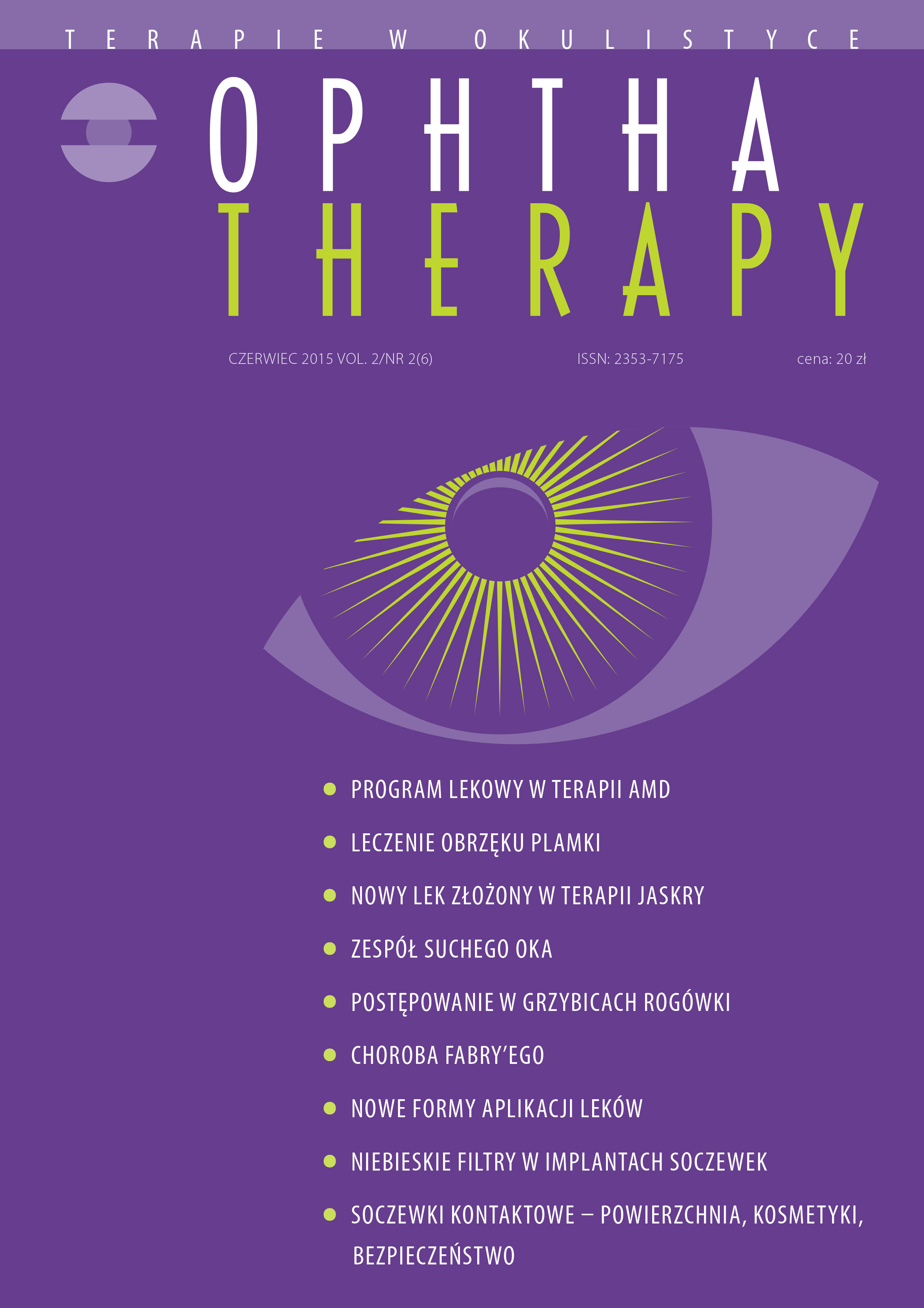Simbrinza – first glaucoma combination drug without β-blocker
Main Article Content
Abstract
Glaucoma is one of the most frequent causes of visual loss in highly developed countries, whereas the continually increasing number of patients forces to search for new diagnostic and therapy methods. This article gives a short profile of antiglaucoma medications, from pilocarpine to the latest fixed combination of brinzolamide and brimonidine in one formula. Randomised clinical trials concerning the new preparation have been analysed, as they suggest that the brinzolamide with brimonidine combination reduces the intraocular pressure more effectively than either medication alone and is also safe for the patient. It is the first fixed combination without timolol, thus being highly recommended for those patients in whom monotherapy does not normalize the intraocular pressure and for whom β-blockers and prostaglandins are contraindicated.
Downloads
Article Details

This work is licensed under a Creative Commons Attribution-NonCommercial-NoDerivatives 4.0 International License.
Copyright: © Medical Education sp. z o.o. License allowing third parties to copy and redistribute the material in any medium or format and to remix, transform, and build upon the material, provided the original work is properly cited and states its license.
Address reprint requests to: Medical Education, Marcin Kuźma (marcin.kuzma@mededu.pl)
References
2. Dufrane R, Ehongo A. Treatment of glaucoma. Rev Med Brux. 2014; 35(4): 291-7.
3. European Glaucoma Society. Terminology and guidelines for glaucoma. The fourth edition. Gogma, Savona 2014.
4. Misiuk-Hojło M, Szumny D, Jurowska-Liput et al. Farmakoterapia jaskry. Górnicki Wydawnictwo Medyczne, Wrocław 2008.
5. Pratt NL, Ramsay EN, Kalisch Ellett LM et al. Association between Ophthalmic Timolol and Hospitalization for Bradycardia. J Ophthalmol. 2015; 2015: 567387.
6. Juneman AG, Huchzermeyer C, Rejdak R. Medicinal glaucoma therapy. What can we learn from large randomized clinical trials? Ophthalmologie. 2013; 110(12): 1134-48.
7. Aung T, Laganowska G, Hernandez-Paredes TJ et al. Twice-daily brinzolamide/brimonidine fixed-combination versus brinzolamide or brimonidine in open-angle glaucoma or ocular hypertension. Ophthalmology. 2014; 121(12): 2348-55.
8. Nguyen QH, McMenemy MG, Realini T et al. Phase 3 randomized 3 month trial with an ongoing 3 month safety extension of fixed combination brinzolamide 1% brimonidyne 0,2%. J Ocul Pharmacol Ther. 2013; 29(3): 290-7.
9. Grupa Robocza European Society of Cardiology (ESC) I European Associations for the study of diabetes (EASD) ds. cukrzycy i chorób ukladu krążenia. Kardiol Pol. 2007; 65: 377-423.
10. Silver LH. Ocular comfort of brinzolamide 1.0% ophthalmic solution compared with dorzolamide 2.0% ophthalmic solution: results from two multicenter comfort studies. Brinzolamide Comfort Study Group. Surv Ophthalmol. 2000; 44(suppl 2): S141-5.
11. Evans DW, Hosting SL, Gherghel D et al. Contrast sensitivity improves after brimonidyne therapy in primary open angle glaucoma: a case for neuroprotection. Br J Ophthalmol. 2003; 87: 1463-5.
12. Greig SL, Deeks ED. Brinzolamide/Brimonidyne: a review of its use in patients with open-angle glaucoma or ocular hypertension. Drugs Aging. 2015; 32(3): 251-60.
13. Siesky B, Harris A, Brizendine E et al. Literature Review and Meta-Analysis of Topical Carbonic Anhydrase Inhibitors and Ocular Blood Flow. Surv Ophthalmol. 2009; 54(1): 33-45.
14. Harris A, Moss A, Rusia D et al. Aktualne poglądy na jaskrę: naczyniowe czynniki ryzyka. Górnicki Wydawnictwo Medyczne, Wrocław 2010.

